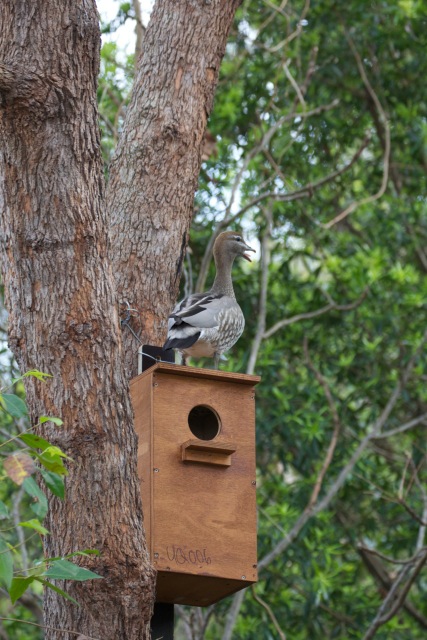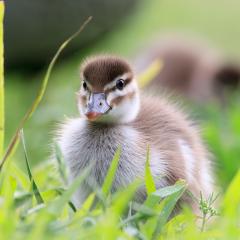 UQ’s feathered friends are flocking to St Lucia and Pinjarra Hills thanks to the 60 new bird boxes recently installed at both University sites, adding to the boxes installed in St Lucia and Gatton campuses in 2015.
UQ’s feathered friends are flocking to St Lucia and Pinjarra Hills thanks to the 60 new bird boxes recently installed at both University sites, adding to the boxes installed in St Lucia and Gatton campuses in 2015.
The latest round of installations is part of an ongoing collaboration between the Property and Facilities Division (P&F) and the Biodiversity Research Group, a UQ-based research team that investigates conservation science and ecology. The group is led by Associate Professor Salit Kark, an Australian Research Council (ARC) Future Fellow at UQ’s School of Biological Sciences and Chief Investigator of the ARC Centre of Excellence for Environmental Decisions and the National Environmental Science Programme’s Threatened Species Recovery Hub.
One of the Biodiversity Research Group’s current projects explores the interactions between native and invasive bird species in urban landscapes, identifying what factors allow species to become ‘urban exploiters’, which are highly successful in human-modified (such as urban) environments.
The research team is particularly interested in cavity-nesting native birds, which use tree hollows to reproduce. Diminishing numbers of large, old trees in built-up areas means that native birds, mammals, reptiles and other species have fewer hollows in which to nest, roost and rest; they’re also forced to compete for space with invasive alien species, such as the Indian myna.
An initial 48 bird boxes—which act as an effective substitute for tree hollows—were installed at St Lucia and Gatton in 2014–15 as part of Kark’s ARC Discovery Project, with funding and assistance from P&F.
Installing and monitoring bird boxes on campus provides valuable living laboratories and links biodiversity research with sustainability benefits. It’s also part of a broader move to improve biodiversity at UQ—related activities include planting trees that attract native birds at various University sites and properties.
The Biodiversity Research Group will continue to monitor the bird boxes across all sites as they progress their research, which is advancing our understanding of the traits required for certain bird species to thrive in an urban environment and the threats caused by invasive alien species. This will facilitate better planning and management of how to enhance biodiversity conservation in both urban and rural landscapes.



